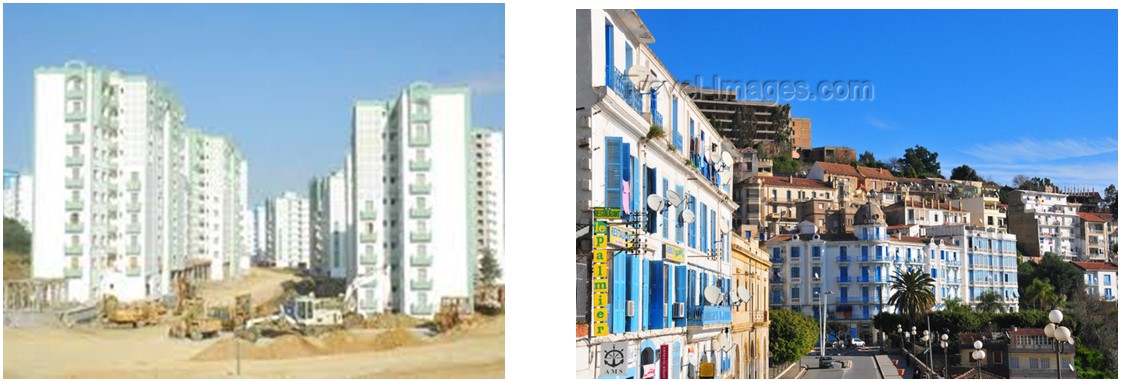Housing: The Need Part II
- Dr. Chafia Ferhat
- August 23, 2023
- Ponder
- Algeria, Dr. Chafia Ferhat, FENN DESIGNERS, Housing, housing loans, Housing the poor, mortgage
- 0 Comments
Continuing from last week blog I wanted to look at Algeria never ending housing shortage problem in a bit more depth before drawing conclusions as to what I believe is the reason Thailand is successing where Algeria is failing miserably.
“Algeria is an important North African Maghreb state with 36 million inhabitants. At 2 381 000 sq km, it is the largest country in Africa. Algeria has recently been enjoying strong growth and low inflation, thanks to high prices on the global oil market, with GDP per capita rising steadily to US$7097 in 2011.
Algeria has growing foreign currency reserves of US$176 billion, second in the world only to Saudi Arabia.
The economy is heavily dependent on the petroleum industry, which accounts for 60 percent of budget revenues, 30 percent of GDP and 95 percent of export earnings. Increased government revenue from this income source has enabled large amounts of public expenditure.
A four-year investment programme running from 2010-2014 will cost US$286 billion and aims to diversify the Algerian economy as well as improve physical and social infrastructure. As the state considers the question of housing to be one of its main responsibilities, about 20 percent of this investment will be devoted to the construction of new units.” Centre for affordable housing finance in Africa
So the Algerian government is spending in 4 years US$ 57.2 billion (THB 1824 billion) to provide housing! This social housing is aimed at low income families.
I have seen the frenzy of construction and the relocation of people from precarious housing in new cities. I have also seen the struggle of many families who do not fall in the “ low income “ bracket to find basic accommodation, because what is available in the private sector is out of most Algerian families reach!
I don’t believe there is any government in the world who can claim they are spending this much on housing the low income families. So why is the shortage of housing one of the biggest ills of this country?

Instead of talking about rhetoric, I thought I better look at something more concrete.
A young graduate from university gets a job and start building his life. He is very eager to get a private bedroom (a luxury in that country) so he works and saves money, after a couple of years he decided to acquire a place to stay. So he looks at renting a small flat. Well not so easy; not only there is a huge shortage, but if he ever find a place, he will need to pay the yearly rent in advance.
Can he get a mortgage from the bank and buy from private developers? No he can’t either. There is no access to bank loans for housing mortgage. So what else can he do, but continue living with his parents sharing a room with his 2-3 brothers or sleeping on the sofa.
And this is the tip of the iceberg! The social impact on the families is immense. Generations of young people are desperate for the most basic form of shelter to become stable. It is absolutely detrimental to any social fabric when there is no stability.
For decade the government with its policies has failed to alleviate the situation.
It is not out lack of trying, or lack of spending public funds. The public funds dedicated to this sector are huge. But the solutions is still elusive.
What makes a housing policy successful?
- Policies
- Financial system
- Regulatory framework
- Management.
These 4 main pillars need to work in absolute harmony to enable the provision of adequate settlements for the people.
So how have the policies performed in the last 5 decades? Here is an assessment by Mr. Makhlouf Nait Saada of the Ministry of Housing Algeria;
During these last four decades, the State played the major role in providing jobs,
health and education amenities and housing facilities.
The implementation of important programmes had to be achieved through a
municipal land management policy and State delivery of land and funds.
Monopolistic and administrative procedures have been set up for the mobilization of
urban land and the provision of adequate infrastructures.
But it must be realized that these policies were shortsighted since they did not
involve concerned actors and the final users in the process of definition,
implementation and management of the built up areas.
Programmes were set up on administrative bases and were undertaken on a costly
approach. The centralized decision making process made the local authorities a
simple instrument to reach the users demand.
…The exclusive use of budget resources during the implementation of former
policies has shown limits and inadequacies. The State as a main provider hindered
the role of other potential actors through a monopolistic intervention.
Related Posts
- Sheetal Chailertborisuth
- July 15, 2013
Recycling; designers and consumers
Environmentally Friendly, Sustainability, Green, Eco-friendly, eco-green, are all words and phi ..

